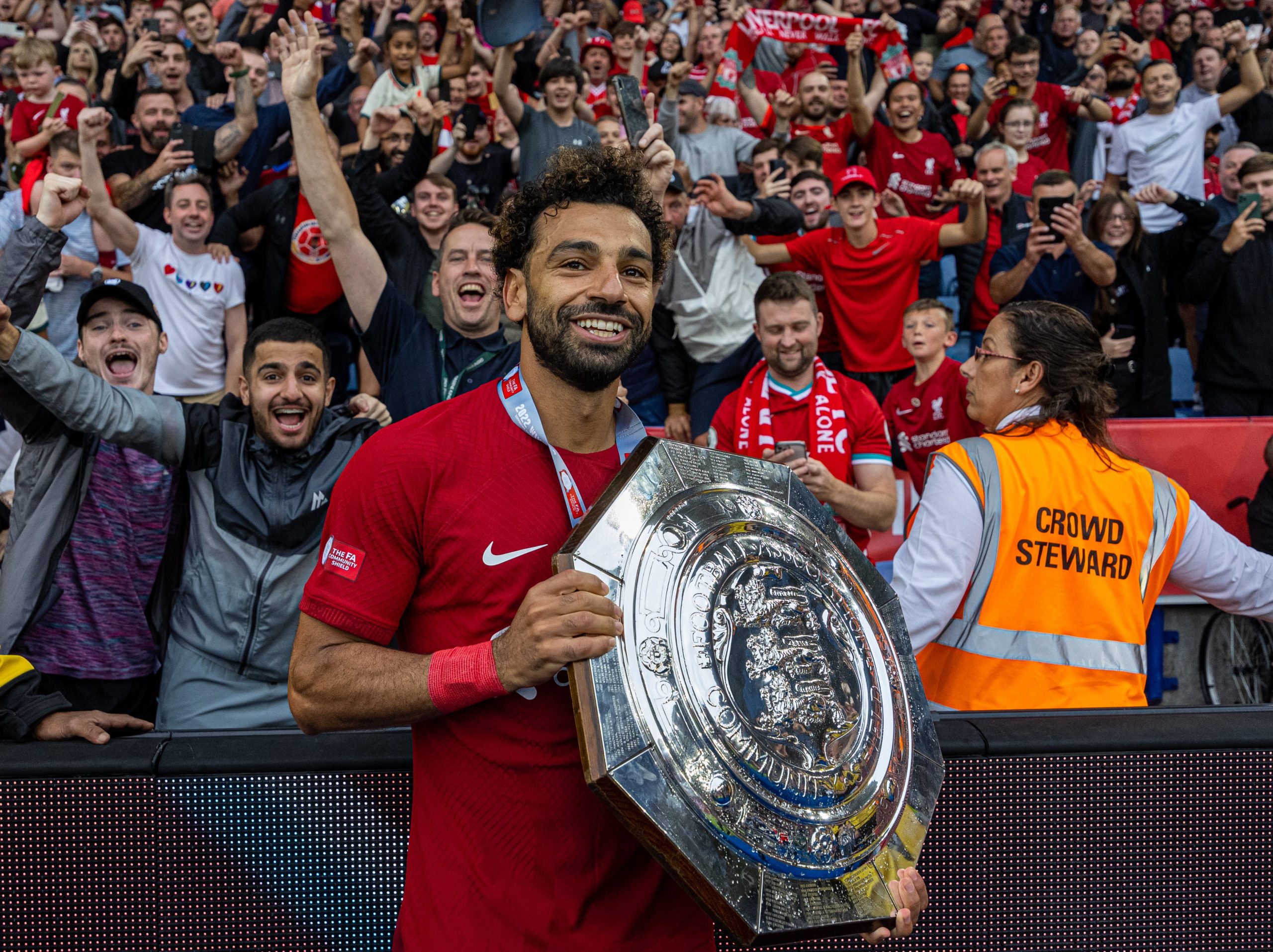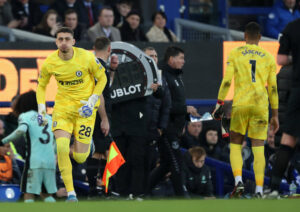Whether it is a subjective view or some quantitative analysis, the verdict is almost unanimous: the Premier League is the best football league in the world. The 2021/22 season was its 30th anniversary and the title race was worthy of its status, as Manchester City and Liverpool fought until the final whistles of their final matches.
Among other qualities, the league is praised for its high competitiveness. However, the numbers suggest a widening gap between the top and bottom teams.
How Competitiveness Changed Through Time in the Premier League
Widely Accepted as the Best
How can we decide on the “best” football league in the world? Is it the clubs’ financial status, success in the international tournaments against teams from other countries, the TV and stadium audiences, the number of top-level players and managers, or some other factors?
Looking at each characteristic separately, the Premier League doesn’t simply top every comparison, but it rather sums up to be the best if you consider all of them together. For example, comparing 37 competitions around Europe, the CIES Football Observatory ranks the EPL 17th in effective playing time and eighth in the percentage of match time with the ball out of play. However, the CIES also echoes the result by skillscorner.com which glorifies it as the most intense league in Europe.
Among other qualities mentioned above, competitiveness is another feature that English football is praised for. For example, Jose Mourinho argued in 2014 that it was harder to be successful in the Premier League than in other big European leagues. Eight years later, his views were echoed by Tottenham‘s Manager, Antonio Conte, who thought the Premier League was very difficult and comparing it to another league was like playing another sport.
Look Below for a Different Picture
The Premier League’s fame of being an intense competition was pretty much confirmed during its 2021/22 season. Manchester City and Liverpool fought for the title until the last moment and if you consider Ligue 1, La Liga and Bundesliga had crowned their champions weeks before the end of the season, that was indeed an exciting finish.
However, if you look from a wider perspective there is a different picture. In contrast to the frenzy at the top, the relegated teams, as well as those qualified to play in the European Cups next year, were decided weeks ago.
Although the title race was intense this season, even the competition at the top appears to be weakening in recent years, as fewer teams compete for the championship. More precisely, there were only three different teams in the Premier League’s top two spots during the past five seasons. This number was seven in the previous five-season period when Mourinho thought the league was more difficult than others.
On the other hand, the struggle at the bottom to stay in the league seems to be concluding quicker as well and multiple teams fighting for survival, such as in the 2014/15 season, happen less often. Naturally, these trends lead to the question of whether the competitiveness in the English Premier League was weakening.
Analysis of Competitiveness in the Premier League Through Time
The world of football statistics is growing fast, thanks to advancements in data collection. Today, there are various common indicators for measuring different aspects of the game. However, despite several attempts by the academic world, we can not say competitive balance is one of them yet. Nevertheless, we will try to measure the competitive balance in the Premier League using some simple calculations and discuss how it has changed over 30 years. Finally, we will compare the Premier League to other European leagues.
The simplest way to measure competitiveness could be by considering the league table and comparing team performances. Since there were 22 teams during the top-flight’s first three seasons, we prefer Points Per Game (PPG) to be able to compare these seasons to the rest.
As a beginning, we can easily compare the PPG difference between the champion and the last place for each season and observe whether there was a change through time. Even this simplest calculation and the fitted linear trend yield roughly 0,62 higher PPG difference from 1992/93 to 2021/22, which makes more than 23 points in a whole season. Extending the observations to cover the three or five teams from both ends of the table doesn’t change the increasing trend either.
Step Back, I’m a Statistician
A slightly more advanced way to use Points Per Game to measure competitive balance involves a little touch by a statistician and taking the standard deviation for each season. Also utilized in some academic studies, the logic is that in a perfectly balanced league, every team would have the same performance, and thus, the standard deviation for that league (or season) would be zero. In that sense, the deviation of each team’s performance from the league average shows a negative correlation with competitive balance.
Applying this approach confirms the result of the simpler method above: the competitiveness in the Premier League has been declining since its start.
One final approach to assessing competitiveness could be considering the goal differences, and not surprisingly, the trend is similar. During the past 30 years, the positive goal difference has increased by around 12 goals, while the negative goal difference has decreased deeper by roughly seven goals, for a whole season. In other words, the better teams’ goal advantage over the worse is now 19 more on average than it used to be back in the 1992/93 season.
A Widening Gap Between the Top and Bottom Teams
The results imply that the competitiveness in the Premier League has been declining since its beginning 30 years ago. The most important reason (and also a consequence) for that appears to be the divergence between the top and bottom teams.
It seems like, the teams were slowly divided into two groups through the Premier League’s three decades. Let’s call them Top-Tier and Bottom-Tier. Roughly ten teams in the Top-Tier are almost never relegated and they often play in European competitions. Therefore, they enjoy a larger and more stable flow of money and thus, can sign the best players and managers.
Meanwhile, the Bottom-Tier teams are quite familiar with the fear of relegation, which would mean fewer revenues from the league, sponsors, broadcasting rights, etc. Furthermore, they often can’t help losing their best players or emerging prospects to the Top-Tier teams. Therefore, their performances don’t move as smoothly as the ones at the top.
Consequently, the Top-Tier teams are continuously getting better, often at the expense of Bottom-Tier teams, which usually switch places with others from the Championship.
To test this hypothetical divergence, we calculate the average PPG differences between the upper and the lower ten team groups of the Premier League for each season. Indeed, it has increased by almost 0.25 points per game during the last 30 years. This makes a roughly ten points difference in a single season.
It Is Getting Harder for Lower Tier Teams to Stay in the Premier League
Because of this divergence, we also observe that teams promoted from the Championship have a harder time staying in the league. More precisely, when we divide the Premier League’s 30 seasons into two halves, the average number of seasons that a promoted team could survive before being relegated back decreases from 4,1 to 2,6.
As a result of this segmentation, the better teams enjoy the advantages of their continuous presence in the Premier League, while others are struggling more to survive. Our last figures explain better: during the last 30 years, the average number of teams that had played in at least five of ten-season periods has decreased from 16 to 13.
An International Comparison
We want to conclude this article with a comparison with other European leagues at the end of the 2021/22 season. The Premier League ranks among the less competitive leagues but all of Europe’s Big Five leagues had seen weakening competitiveness over time. However, the Bundesliga and La Liga have reversed their courses during the past few years. As of the last five seasons until 2021/22, the competitiveness in the EPL is marginally better than the Serie A. However, the top-flight’s absolute loss of competitive balance in 30 years is comfortably the highest among the Big Five.
No Problem, for Now
We are not alone in our conclusion, as academic studies like the one above and this one confirm the higher levels of unbalanced competition in the Premier League. Although simple economic theories argue that lower competition would harm the healthy functioning of a market, the EPL doesn’t seem to suffer from such a problem for now.
Peter Fitzpatrick points to the recent interest of blockchain companies in Premier League teams’ sponsorship, as the last industry ready to pour money into the world’s best league. Probably, Nicolas Scelles from the University of Stirling offers an explanation for this, as he concludes that the star quality and the intensity of the championship race were the significant factors on the Premier League’s TV audiences, while the race for Europa League or potential relegation intensity was not.
The loss of competitiveness in the Premier League probably might not mean trouble for now, especially for the teams at the top. However, the situation is more serious for lower-Tier teams, who start facing problems just on the day they are relegated.
Usually, teams moving up to the Premier League need to spend more to stay here. In this regard, getting a return for their investments and staying in the EPL is crucial for lower-Tier teams. Otherwise, they can see their financial situation worsen quickly and sink into lower leagues. Worse, they may even go bankrupt and entirely vanish. Unfortunately, such bitter examples are slowly piling up, taking their broken-hearted fans with them.
Remember Coventry City, Portsmouth, or Wigan?
𝗞 𝗜 𝗡 𝗚 👑 @MoSalah pic.twitter.com/RSOHI5nCoG
— Anfield Watch (@AnfieldWatch) July 30, 2022






